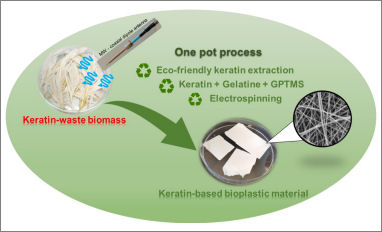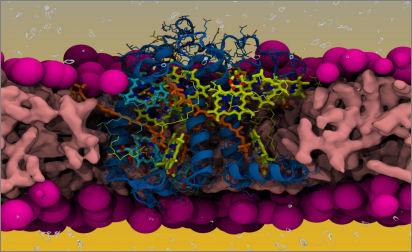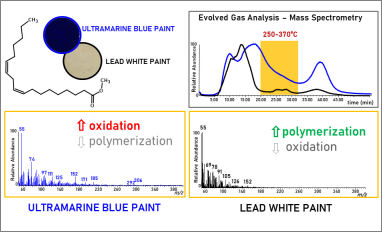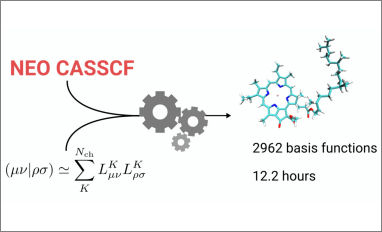
 Congratulations to our PhD student Elena Pulidori for her publication entitled: “One-Pot Process: Microwave-Assisted Keratin Extraction and Direct Electrospinning to Obtain Keratin-Based Bioplastic”. In this study it is proposed an efficient, non-expensive, and green process to recover keratin from industrial wastes (i.e., poultry feathers), which can be integrated in a one-pot process wherein raw keratin extract is directly used in electrospinning process (ES) to produce bioplastics, which are attractive for technological applications (e.g., bio packaging, purification / filtration membranes) in the framework of circular economy and in waste recycling.
Congratulations to our PhD student Elena Pulidori for her publication entitled: “One-Pot Process: Microwave-Assisted Keratin Extraction and Direct Electrospinning to Obtain Keratin-Based Bioplastic”. In this study it is proposed an efficient, non-expensive, and green process to recover keratin from industrial wastes (i.e., poultry feathers), which can be integrated in a one-pot process wherein raw keratin extract is directly used in electrospinning process (ES) to produce bioplastics, which are attractive for technological applications (e.g., bio packaging, purification / filtration membranes) in the framework of circular economy and in waste recycling.
 Congratulations to our PhD student Edoardo Cignoni for his publication entitled: “A Different Perspective for Nonphotochemical Quenching in Plant Antenna Complexes”. Light-harvesting complexes of plants exert a dual function of light-harvesting (LH) and photoprotection through processes collectively called nonphotochemical quenching (NPQ). While LH processes are relatively well characterized, those involved in NPQ are less understood.
Congratulations to our PhD student Edoardo Cignoni for his publication entitled: “A Different Perspective for Nonphotochemical Quenching in Plant Antenna Complexes”. Light-harvesting complexes of plants exert a dual function of light-harvesting (LH) and photoprotection through processes collectively called nonphotochemical quenching (NPQ). While LH processes are relatively well characterized, those involved in NPQ are less understood.
 Congratulations to our Ph.D. students Silvia Pizzimenti and Giulia Caroti for their publication "Disclosing the chemistry of oil curing by mass spectrometry using methyl linoleate as a model binder" on Microchemical Journal. In this study a methodological approach for the systematic mass spectrometric investigation of the molecular features of the products of oxidative degradation and cross-linking of oil paint layers upon curing was implemented.
Congratulations to our Ph.D. students Silvia Pizzimenti and Giulia Caroti for their publication "Disclosing the chemistry of oil curing by mass spectrometry using methyl linoleate as a model binder" on Microchemical Journal. In this study a methodological approach for the systematic mass spectrometric investigation of the molecular features of the products of oxidative degradation and cross-linking of oil paint layers upon curing was implemented.
 Congratulations to our PhD student Tommaso Nottoli for his publication entitled: “Second-Order CASSCF Algorithm with the Cholesky Decomposition of the Two-Electron Integrals”. In this contribution, we present the implementation of a second-order complete active space–self-consistent field (CASSCF) algorithm in conjunction with the Cholesky decomposition of the two-electron repulsion integrals.
Congratulations to our PhD student Tommaso Nottoli for his publication entitled: “Second-Order CASSCF Algorithm with the Cholesky Decomposition of the Two-Electron Integrals”. In this contribution, we present the implementation of a second-order complete active space–self-consistent field (CASSCF) algorithm in conjunction with the Cholesky decomposition of the two-electron repulsion integrals.



